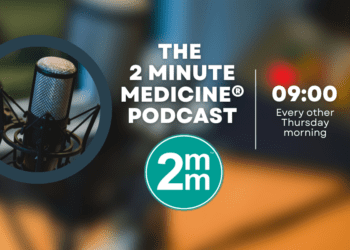Obstetric scoring systems overestimate cases of severe sepsis
1. Existing modified obstetric early warning scoring systems varied in criteria, sensitivity, and specificity for detecting severe sepsis.
2. These scoring systems were poor predictors of severe sepsis and tended to overpredict severe sepsis.
Evidence Rating Level: 2 (Good)
Study Rundown: Sepsis is a systemic inflammatory response to infection and manifests in varying degrees of severity, from systemic inflammatory response syndrome to septic shock. Given the increased mortality associated with sepsis, early identification is paramount to appropriate treatment. To this end, the Modified Early Warning Score (MEWS), which is based on vital signs, mental status and urine output, was developed; it has been shown to predict the need for intensive care and increased mortality. Physiological changes of pregnancy, such as increased heart rate, can mimic the signs of sepsis, making it more challenging to accurately identify septic patients in a timely manner. Prior studies exploring the use of the MEWS in the obstetric population demonstrated that it does not perform as well as for the general population. Since maternal sepsis is a leading cause of preventable maternal morbidity and mortality, several modified obstetric early warning scoring systems (MOEWS) were developed, but few have been validated. The present work sought to assess the predictive power of existing MOEWS among women with chorioamnionitis. The authors found that criteria varied between systems and that severe sepsis was overdiagnosed, suggesting that secondary testing following a positive score may be useful to prevent overtreatment.
Strengths of the study include prospective data collection and comparison of obstetric scoring systems to the MEWS. Limitations included retrospective design and low incidence of severe sepsis in the study population, which lowers positive predictive value. Additional large-scale, prospective studies are needed to identify or develop the best MOEWS and if appropriate, secondary test for detecting severe sepsis.
Click to read the study in AJOG
Relevant Reading: Existing models fail to predict sepsis in an obstetric population with intrauterine infection
In-Depth [retrospective cohort]: This study assessed the predictive power of 6 existing MOEWS among 364 women identified via electronic chart review as having chorioamnionitis. Outcomes of interest were sensitivity, specificity, positive and negative predictive value of the MOEWS.
Sensitivities ranged from 40-100% (CI: 5.27-95.3%, 47.8-100%) and specificity also ranged widely from 3.6-96.9% (CI: 1.94-6.11%, 94.6-98.5%). Positive predictive value ranged from 1.42-15.4% (CI 0.47-3.3%, 1.92-45.4%). The greatest area under receiver-operating characteristic curve was 0.72 (CI: 0.48-0.96).
More from this author: Vitamin D deficiency linked to preeclampsia, Cervical ripening with isosorbide mononitrate linked to increased side effects, Progesterone injections for short cervix do not reduce preterm birth, Unexplained infertility often overtreated, Twin-specific gestational diabetes screening guidelines needed
Image: PD
©2014 2 Minute Medicine, Inc. All rights reserved. No works may be reproduced without expressed written consent from 2 Minute Medicine, Inc. No article should be construed as medical advice and is not intended as such by the authors, editors, staff or by 2 Minute Medicine, Inc.







